Kodak Had to Engineer Brand-New 65mm Film Stock for the Black-and-White ‘Oppenheimer’ Sequences
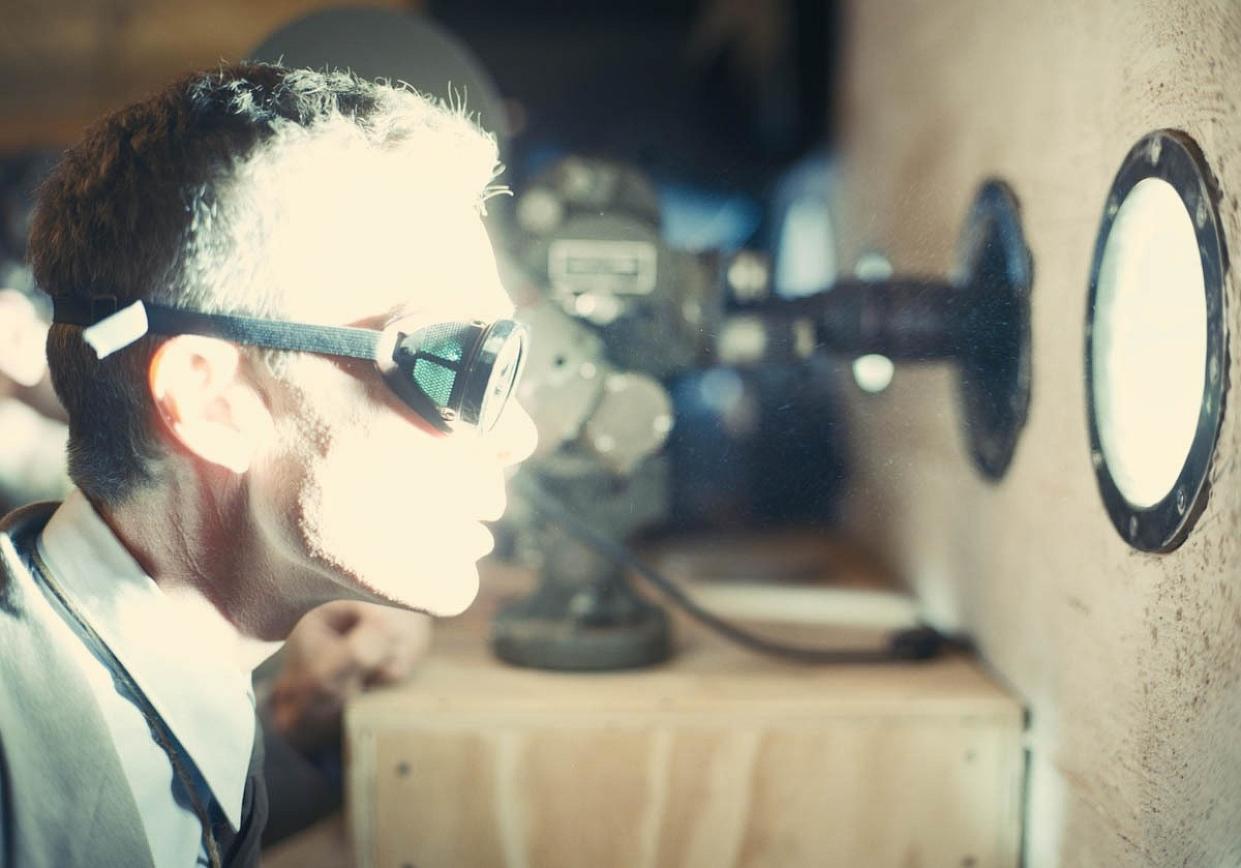
- Oops!Something went wrong.Please try again later.
- Oops!Something went wrong.Please try again later.
- Oops!Something went wrong.Please try again later.
- Oops!Something went wrong.Please try again later.
Given the historical and psychological complexity of “Oppenheimer” — the biopic thriller about physicist J. Robert Oppenheimer (Cillian Murphy), the “father of the atomic bomb” — director Christopher Nolan and go-to cinematographer Hoyte van Hoytema ventured into uncharted territory with the large-format IMAX camera to explore the landscape of faces. Specifically, the faces of Oppenheimer and Admiral Lewis Strauss (Robert Downey Jr.), a major figure in the development of nuclear weapons during the Cold War.
To help achieve a more intimate spectacle, redefining portraits and close-ups for 70mm IMAX, Nolan divided the film into separate perspectives and timelines: He called Oppenheimer’s “Fission” (in color) and Strauss’ “Fusion” (in black-and-white), in keeping with the quantum physics theme.
More from IndieWire
Tom Cruise Wanted Sound He Could Feel in 'Mission: Impossible - Dead Reckoning'
What's Fi-Core? The Alternative to Being a Card-Carrying SAG-AFTRA Member
“This was a three-hour-long movie about faces,” van Hoytema told IndieWire. “And our challenge was to be able to get closer with the camera to make those faces become our landscape, and to make those faces interesting enough for the audience to become captivated by them.”
However, shooting close-ups in IMAX was harder, technically, than capturing the vistas of Los Alamos, New Mexico, where Oppenheimer oversaw the creation of the atomic bomb as part of The Manhattan Project. Van Hoytema usually relied on tight 80mm lenses for close-ups, but he needed to get closer than 6 feet for greater intimacy. With no available lenses, Panavision lens specialist Dan Sasak supplied and adapted Hasselblad, Panavision Sphero 65, and Panavision System 65 lenses for “Oppenheimer.”
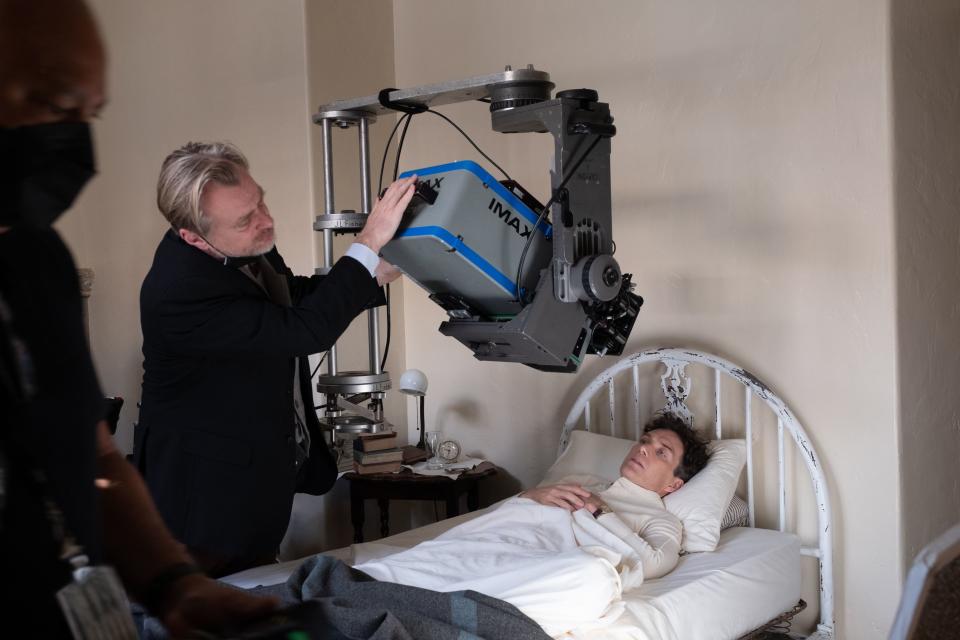
As with “Dunkirk” and “Tenet,” though, it was impractical to shoot entirely in 65mm IMAX, given the noisy camera and the dialogue-driven nature of “Oppenheimer.” Van Hoytema shot with the IMAX MKIV, IMAX MSM 9802, and Panavision Panaflex System 65 Studio cameras. But he shot IMAX whenever possible for optimal resolution and immersion. The film is playing in a record number of 70mm IMAX theaters: 30 worldwide, including 19 in the U.S. and six in Canada.
Kodak supplied 65mm film for the 15-perf IMAX and 5-perf Panavision cameras: 250D (5207) and 500T (5219) color negative and Double-X (5222) black-and-white negative. Yet large-format black-and-white film was a first for Kodak — and how they finished it for use in the IMAX camera was a challenge. This required a partnership between Kodak/FotoKem/IMAX and Panavision to support the 65mm black-and-white workflow.
Apart from a few surreal moments imagined by Oppenheimer, van Hoytema went for period naturalism in conveying the contrasting personalities and emotions of Oppenheimer and Strauss. Dramatically, the film pitted the celebrated and controversial physicist, burdened with becoming Prometheus incarnate for his weapon of mass destruction, against a rising star of the industrial/military complex seized by ambitions of power and glory. What extraordinary performances and iconic faces van Hoytema had to work with.
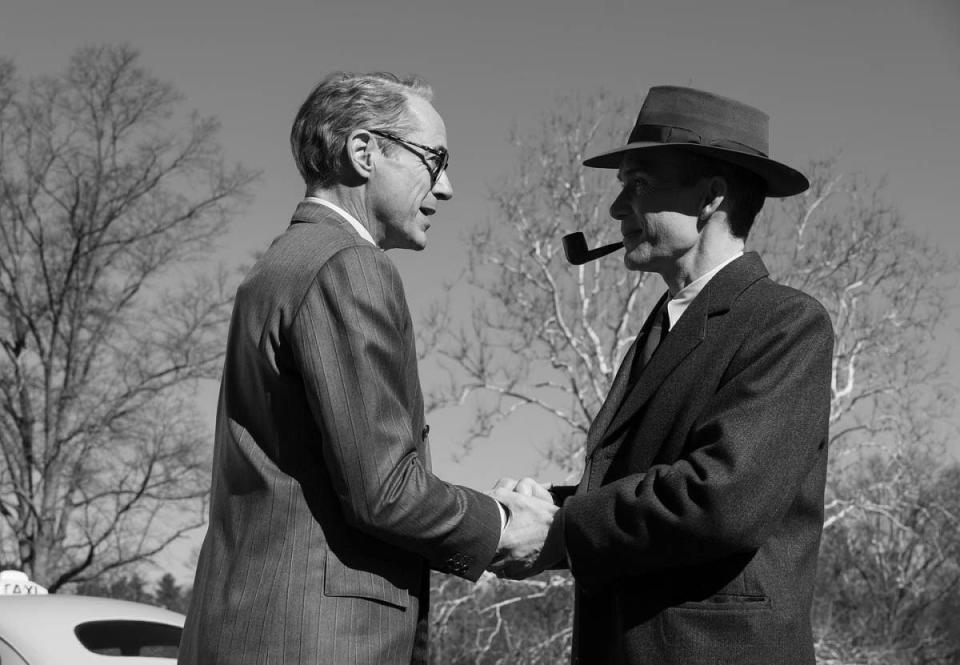
“The actors, of course, make my life a lot easier,” he said. “I’m not asked to make something magically work. They’re very much film actors and they honed their performances. They have a very good understanding of that intimacy and what the camera sees.”
Referencing large portrait photography was essential for van Hoytema. “There was definitely creative latitude, but you’re portraiting what could play in the head of your main character,” he added. “You have to be very much character driven but almost impure towards your characters.”
Photographing in black-and-white, though, required more control with lighting. Fortunately, van Hoytema relied on what he learned about the process as a student at the Łódź Film School in Poland. “It’s raw and it very quickly looks concept-y and aesthetical,” he said. “The reason for the black-and-white was very much a way of separating those two narratives, so that on an intuitive level you could easily jump from one to the other. In a way, we had already done that with the blue and the red color coding in ‘Tenet.’ Black-and-white seemed a very obvious way to do it in this film.”
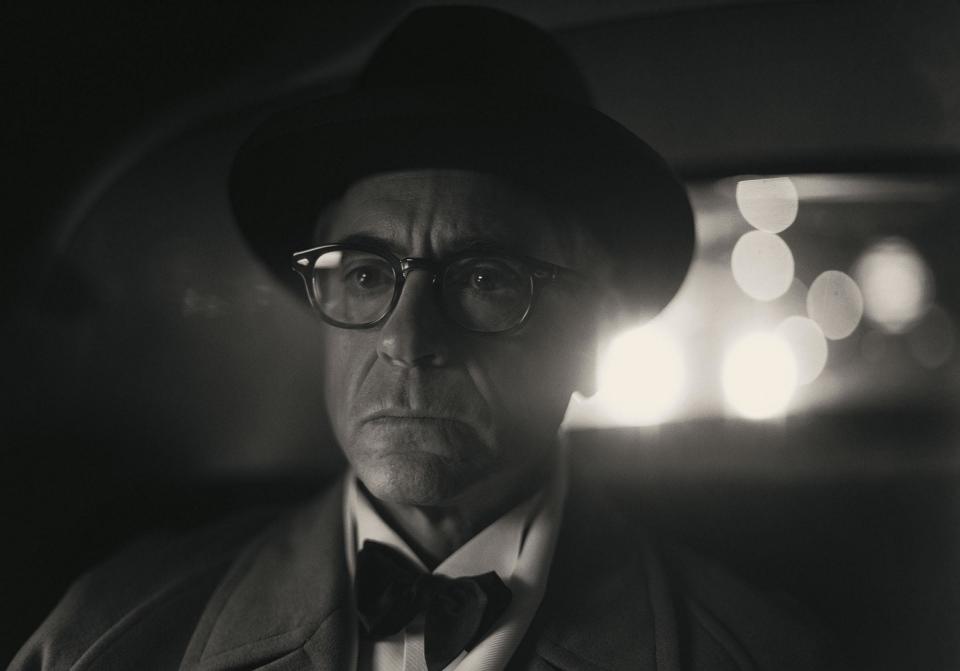
But 65mm black-and-white didn’t exist, so the director and cinematographer asked Kodak if they would be able to produce it. “After months and months of trial and error,” said van Hoytelma, “they came back with several cans that had handwritten labels that we then could run through our cameras. We thought this was gonna be the end of our engineering and we were gonna ask them to produce enough film for us.
“But then we had to figure out the cameras,” he continued. “They don’t run the film through as they shoot because the emulsion is different and the backing of the film is different. So Panavision and IMAX had to re-engineer the cameras, especially the pressure plates. And FotoKem, the lab, had to come up with all kinds of different things, and the planning, and the infrastructure. When could we do black-and-white and when could we do color, and how are we going to plan our shoot around what we can achieve in the lab?”
Aside from the vast landscape of Los Alamos, where Oppenheimer felt most at home, the locations consisted of small spaces, which often became a psychological pressure cooker for the physicist. “They all represent different moments of his life, different moments in his development, different states of emotionality,” the cinematographer said. “So that is something that we were very enslaved to with the camera.”
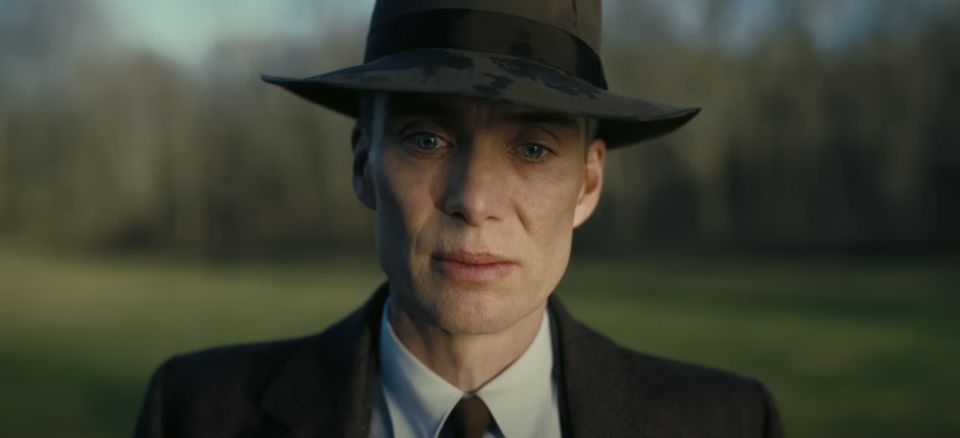
There are unforgettable IMAX close-ups throughout, including Oppenheimer observing the successful Trinity atomic blast and the sense of horror during his celebratory address in the Los Alamos gym after the Japanese surrender. This is when he imagines the radioactive fallout from the Hiroshima and Nagasaki bombings. For this, van Hoytema was able to leverage the power and controllability of LED tech along with back projection with the help of VFX to manipulate the image so that it gradually vibrated as the scene progressed.
Strauss, who battled his own demons, expresses dread in a close-up while driving in a car on the way to a meeting about the Soviet nuclear threat with Oppenheimer and the Atomic Energy Commission. “It’s about lightness and darkness and your contrast is a little higher, and you have to overcome that a little bit by sometimes lighting it more aggressively,” van Hoytema said.
But the most sublime Oppenheimer close-up, beside the lake at Princeton, was also one of the hardest. “You do a shot like that and everybody feels the weight,” said van Hoytema. “We tried some different things. I worked with some bounces, I moved some negative around, and somehow all our feelings culminate and all our working together shake hands at that moment.”
Best of IndieWire
Quentin Tarantino's Unmade Movies: 21 Projects the Filmmaker Almost Directed
Christopher Nolan Movies, Ranked from 'The Dark Knight' and 'Tenet' to 'Dunkirk' and 'Oppenheimer'
The Best Sex Scenes of the 21st Century: 'Beau Is Afraid,' 'Call Me By Your Name,' and More
Sign up for Indiewire's Newsletter. For the latest news, follow us on Facebook, Twitter, and Instagram.

